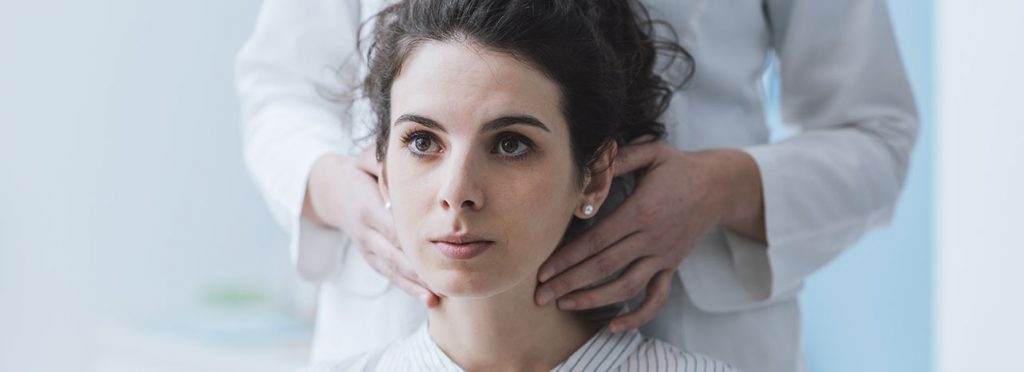
Thyroid Gland, even though a small butterfly shaped gland, plays an important role in a woman's metabolism, energy levels, hair, and skin health.
Thyroid gland can become under active (hypothyroid) or overactive (hyperthyroid). Thyroid can also become enlarged (goiter) or develop nodules (growths within the thyroid).
Women are five to eight times more likely than men to have thyroid problems.
One woman in eight will develop a thyroid disorder during her lifetime.
Hypothyroidism (underactive thyroid) is more common in women than men and manifests as:
- Weight Gain
- Decreased energy
- Lethargy
- Depression
- Constipation
- Dry Skin and Hair
- Hair Loss
- Heavy Menstrual Periods
- Neck swelling aka Goiter
- High Cholestrol Levels and many more…
AWARENESS LEADS TO DIAGNOSIS

Most important step is to approach your doctor and get yourself examined. Thyroid blood tests are valuable in reaching diagnosis. Imaging also plays an important role in thyroid diagnosis. An ultrasound is a great non invasive non-ionizing test to evaluate thyroid gland changes or abnormality.
Role of Thyroid Ultrasound
An ultrasound is a fast, real-time test to evaluate thyroid gland changes. Its best indicated in following clinical situations:
- Single nodule felt by the doctor or patient on physical exam.
- Several nodules also known also known as Multinodular Goitre.
- Suspicion of nodule with difficult neck exam.
- History of receiving radiation to the neck.
- Several lymph nodes enlargement in the neck.
- Ultrasound is also a great tool for pre-surgical planning.
Role of Fine Needle Aspiration or Thyroid Biopsy:
If you or your doctor feels a thyroid nodule, after initial blood workup and ultrasound exam, a thyroid Fine Needle Aspiration Biopsy (FNAB) of thyroid cells may be necessary.
An FNAB or Thyroid Biopsy can be done in our office with a very fine needle. The patient is fully awake during the procedure and doesn’t require any special preparation. With the help of ultrasound guidance a very thin needle withdraws cells from the nodule. Usually 4-5 samples are taken to give the best chance of diagnosing abnormal cells. The cells are reviewed under the microscope by a pathologist and the doctor will review the results with you.
Hopefully this page helped you learn new information, if you have any questions please feel free leaving a comment below or email Dr. Priyanka Grover at pgrover@wiinhealth.com.

